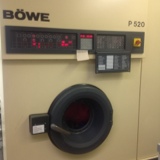Information
-
Document No.
-
Audit Title
-
Client / Site
-
Conducted on
-
Prepared by
-
Location
-
Personnel
-
Add location
-
Select date
-
Make of Machine
-
Model of Machine
-
Serial Number
-
Load Capacity
-
Date of Installation
-
Dry Cleaning Solvent Used
-
20grams of solvent per kilogram of product cleaned and dried - measured and reported annually. <br>(Equivalent to 80kgs of clothing cleaned and dried per litre of Perc)
-
Weekly inventory of solvent usage product cleaned and solvent waste sent for recovery/disposal to be maintained for at least 12 months on site
-
Procedures checks maintenance requirements documented and implemented (see their maintenance docs)
-
Regulator to be informed 14 days before any change which could affect VOC emissions
-
Do all staff know where operating manual for each DC machine can be found/ where kept?
-
All staff trained in operation of DC machine and control and use of DC solvents? Training recorded?
-
Machine installed and operated in accordance with supplier instructions and as per make/model/serial no/load/date of installation/DC recommendations to minimise emissions?
-
If abnormal emissions operator must: investigate immediately and take corrective action; promptly record events and action taken (includes detectable smell in area other than where DC machine located)
-
If operation results in incident/accident significantly affects environment the operator must: inform regulator, take necessary measures to limit consequences of incident and take measures to prevent recurrence
-
In event of breach of any permit condition operator must inform regulator immediately and take necessary measures to ensure compliance is restored within shortest possible time
-
In event of breach of permit condition poses an immediate danger to human health or threat to Immediate significant adverse effect on environment - operation/relevant part to be suspended until compliance and inform regulator within 24 hrs
-
Machine to be operated as full as type of materials to be cleaned will allow? (Light non delicates- full loads; delicates and heavy materials such as blankets and wedding dresses may be part loads)
-
If cleaning solvent received in bulk are they stored in containers they were supplied in with secure lid except when in use, within spillage collectors away from heat/light sources, in area of restricted access?
-
This should be in a well ventilated area for health and safety reasons
-
If cleaning solvent not received in bulk are lids removed when container next to machine ready for filling? Containers purchased to be of a size allows whole container to be emptied at one time?
-
Once emptied the containers should be re lidded securely
-
Spot cleaning with organic solvent/OS borne preparations shouldn't be carried out unless it is only method of treating a particular stain
-
Dry cleaning machine loading door shall be kept closed when machine not in use
-
DC machine loading door to be closed before start up and kept closed throughout entire cycle?
-
All machines installed after 19 May 2005 to have interlocks- prevent startup unless door closed and prevent door opening during cycle until cycle finished and cage ceased rotating
-
All machines installed after 19 May 2005 - interlocks automatically shut down machine if:cooling water shortage, cooing ability of still condenser or refrigeration system fails or failure of heating system for drying load
-
The still, button trap and lint filter doors to be all closed before start up and kept closed throughout cycle (all machines installed after 19.5.05 to have interlocks to automatically shut down machine if these doors not closed)
-
Does still have thermostatic control device or equivalent with which to set a max temperature in accordance with manufacturers recommendations for solvent used
-
Heat source shall automatically switch off at the end of the distillation process
-
Machine shall have spillage tray with a volume greater than 110% of volume of largest single tank in the machine
-
Machines installed after 19 May 2005 to have a secondary water separator to minimise solvent loss
-
Before disposal contaminated containers to be stored with secured lids to minimise emissions from residues and labelled so those handling them are aware of their contents
-
Solvent contaminated waste to be stored: suitable sealed containers with securely fastened lid except when in use, impervious floor, away from drains, away from heat/bright light and area restricted to trained staff
-
Equipment to clean up spillages must be quickly accessible in all solvent handling storage areas
-
Operator to maintain records of maintenance, testing, repairs for each DC machine and weighing scales as well as training records. All records to be available within 7 days of request by council
-
Spares and consumables in particular those subject to continual wear to be held on site or available at short notice from guaranteed suppliers so plant breakdowns can be rectified rapidly
-
Add media
-
Add signature














